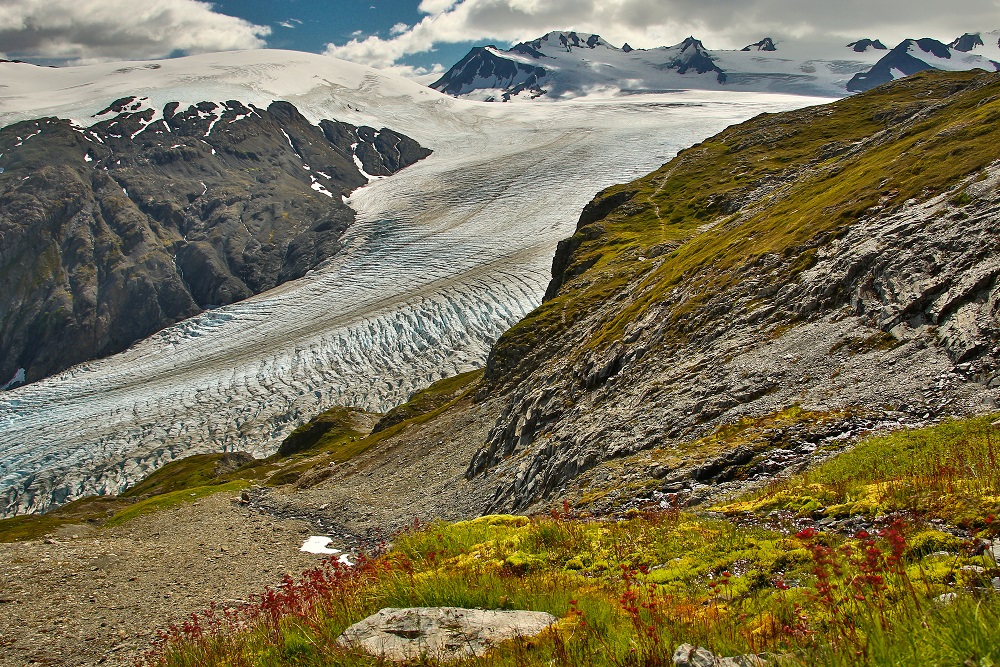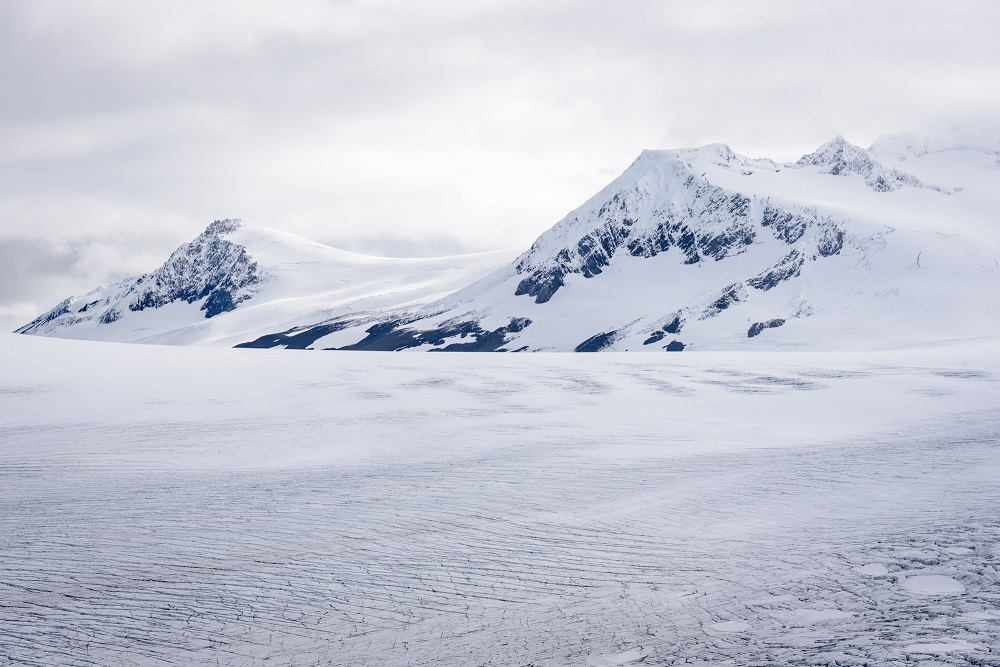Exit Glacier is one of the major attractions in Kenai Fjords National Park. It flows down from Harding Icefield, a 300 mile area under ice several thousand feet thick covering a mountain range in the Kenai Mountains. More than 35 glaciers over flow down from a 700 square mile area towards the ocean.
The Exit Glacier area is the only part of Kenai Fjords accessible by car and contains a popular hiking trail and nature center. Over 100,000 people visit the area annually. It is located a few miles from Seward, Alaska, which is a popular port for cruise ships and fishing.


Exit Glacier Road
Also known as Herman Leirer Road, the eight mile road from Mile 3 of Seward Highway closes in the winter but remains open to recreational activities such as skiing, snowmobiles and walking.
Exit Glacier Shuttle
There is an hourly shuttle from Memorial Day weekend to Labor Day run by a private operator. Pickups are scheduled on arrival to make sure there is room for your return trip, since there is not cell phone service at the park. The roundtrip fee for the Exit Glacier Shuttle is $15 per person, with an additional fee for a local guide during your trip.
Exit Glacier Nature Center
The park nature center is located at the end of Exit Glacier Road. There is a parking lot and it is also the trailhead for the Harding Icefield Trail and the Lower Trail (aka Edge of the Glacier Trail). There is also a wheelchair accessible trail known as the Glacier View Loop trail to a Glacier View at the Outwash Plain. The nature center is open from 9 AM to 5 PM from Memorial Day weekend through Labor Day. There are 90 minute ranger-led walks daily during the summer. During the summer there are flush toilets nearby and potable water is available at the restrooms.
Exit Glacier Trails
The Edge of the Glacier Trail is a 15-20 minute walk from the parking area. The park service has placed markers that show the recession of the glacier over history. It is classified as a moderately strenuous hike by the park service.
The Harding Icefield Trail is a nine mile round trip from the visitor center with a substantial elevation climb for the first four miles. It provides panoramic views of Exit Glacier. The views begin around 1-2 miles in when hikers reach Marmot Meadows. The park recommends six to eight hours to complete the hike to the top and return, although there are spots at mile 1.3 and 2.3 that offer spots to turn around if you do not have time for the hike to the end. Also, please be aware that bears frequent the trail.
Exit Glacier Campground
This is a 12 site, walk-in tent campground with sites available on a first come, first served basis. There are no reservations or camping fees. It is located off Exit Glacier Road – after crossing into the park it will be the first turn on the left about 3/4 of a mile from the entrance sign. The campground is popular in July and August. There is a water pump for drinking water, pit toilets, and a central food storage/cooking/dining shelter.
Exit Glacier Weather
Summer daytime temperatures range from mid-40s to low 70s. Snow can remain in higher elevations through June or July. Rain can make it difficult to navigate some trails.
Exit Glacier in May
The park is open before the nature center opens. However, some portion of the road may not be plowed at that time. It may be necessary to hike-in and special gear (such as snow shoes) may be needed due to snow on the trail.
FREQUENTLY ASKED QUESTIONS
How long is the hike to Exit Glacier?
The glacier can be seen after a 1-2 mile hike depending on which trail you take. It is also possible to reach the toe of the glacier by hiking up the Outwash Plain.
Can you drive to Exit Glacier?
You can typically drive from Seward to Exit Glacier (weather permitting) in 10 to 15 minutes from mid-May to October.
How much has Exit Glacier receded?
Exit Glacier reached the height of its expansion around 1815. It had expanded during the Little Ice Age, a period that ranged several hundred years and ending in the 19th century. At the end of that period, it began retreating about three feet a year. The retreat has expanded in recent years, with the glacier shrinking nearly 300 feet in 2016. In the last hundred years (since 1917), Exit Glacier has retreated about a mile.
